Let’s Cook Clean: Navigating E-Waste Management in Kenya and Rwanda
Increasing access to electricity, levels of disposable income, and growing urbanization are key contributors to the burgeoning number of appliances across most modern societies. For instance, the Kenya home appliances market attained a value of USD 184.48 million in 2018 and is projected to reach USD 363.92 million by 2027, growing at a compounding annual growth rate (CAGR) of 7.8%.1
This significant growth speaks to the urgent need to plan for proper management of potential e-waste resulting from the scale up of the appliance market. Proper management is crucial to avoiding any health or environmental consequences of e-waste and to taking proactive steps towards protecting individuals and their communities.
In Africa, less than 1%2 of e-waste is documented as collected and recycled properly. Even though many studies have been conducted on e-waste management, very few are in sub–Saharan Africa where most countries face significant e-waste management issues.
Loughborough University, through the Modern Energy Cooking Services (MECS) Programme worked with CLASP to conduct a research study on repair and end-of-life practices related to electric cooking appliances in Kenya and Rwanda. As the market for electrical cooking (e-cooking) products is only just taking off in many African countries, the study used televisions as a proxy for e-cooking, given their relatively mature market. The study provides insights into the ecosystem of the appliance market in both countries, how it operates, what happens to products at each stage of their end-of-life pathway, and the associated impacts.
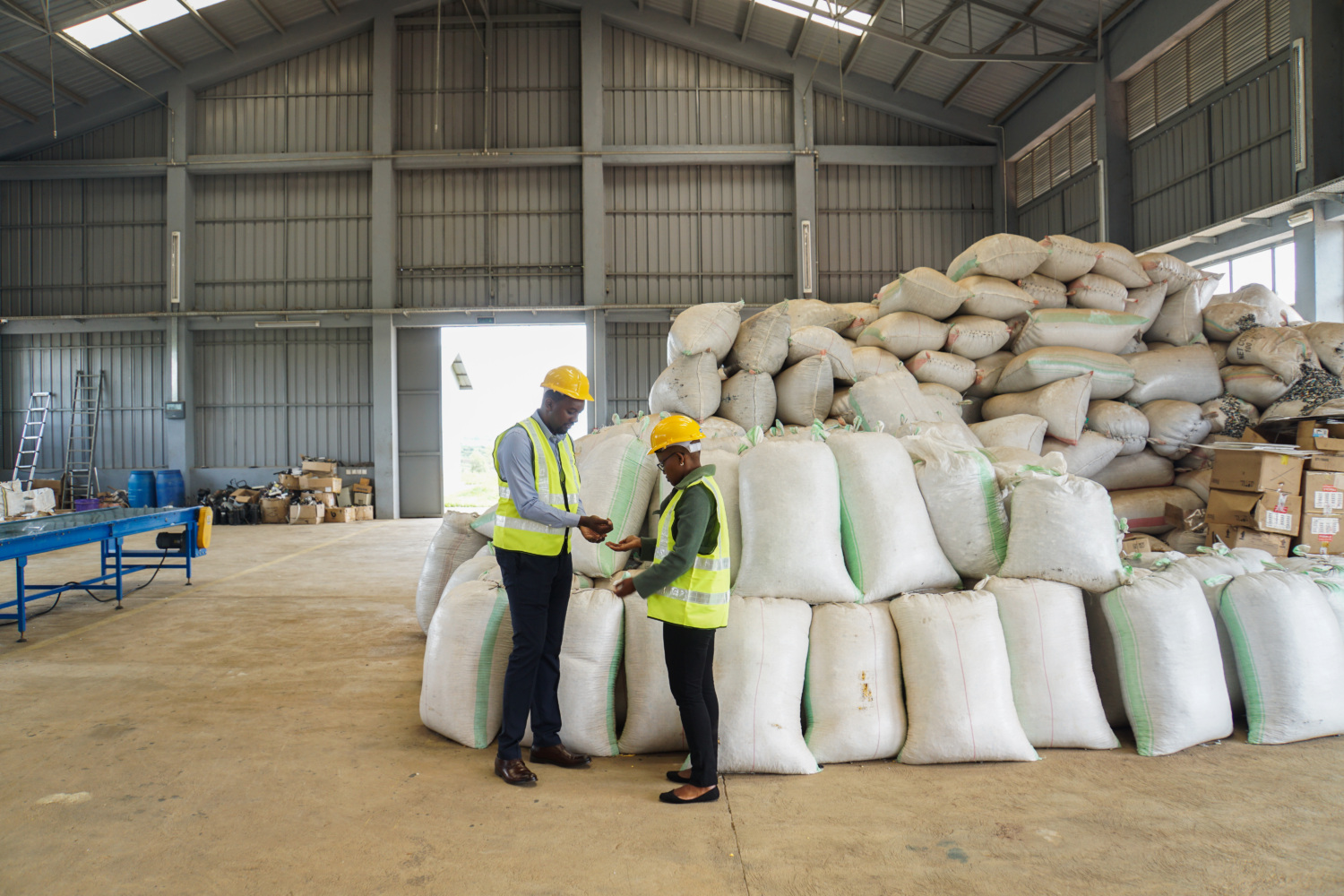
In Africa, less than 1% of e-waste is documented as collected and recycled properly.
Taking Action: Consumer Behavior and Awareness on End-of-Life Appliance Management
Unless externally incentivized, Consumers control the end-of-life pathway for their used electronics. This could be a formal drop-off point, informal waste collection, or storage within the home. Upon appliance failure, many consumers in both countries opt to take the appliance for repair, and this is predominantly conducted by informal local repair shops.
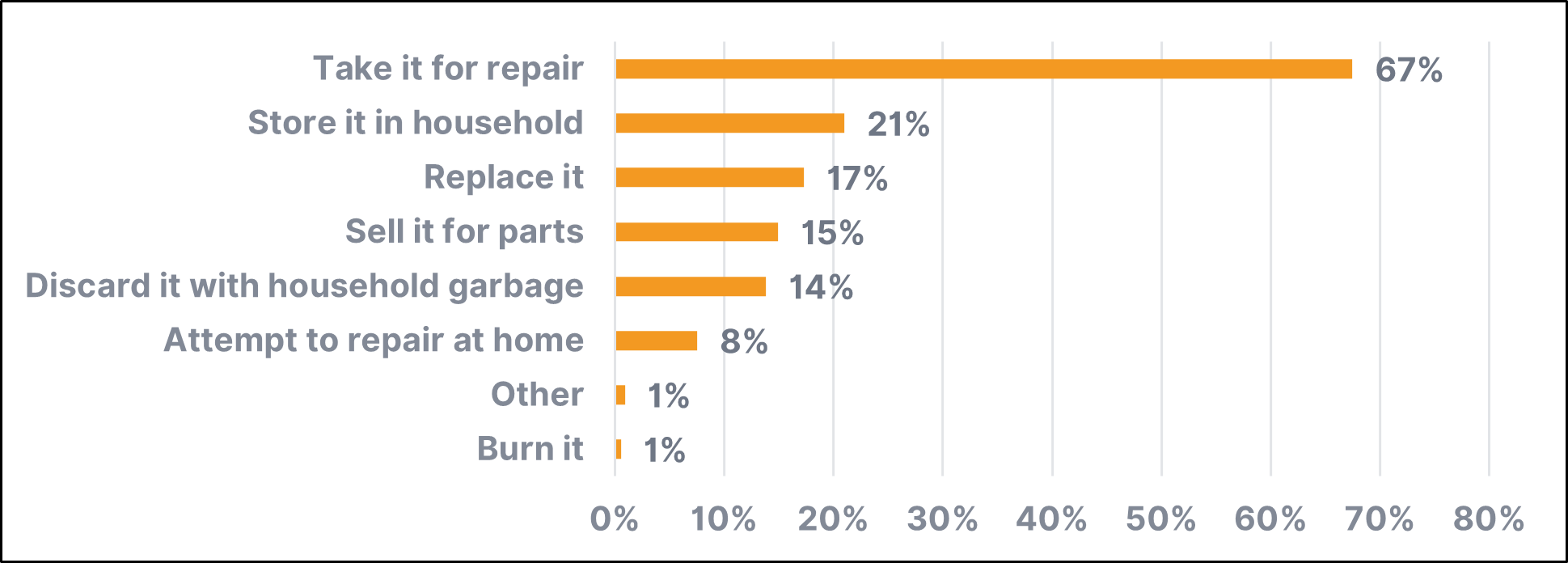
Overall, repair choices are most influenced by cost effectiveness. Consumers in Kenya who repair their appliances are willing to pay a service/repair fee of up to only 20% of the original appliance cost.
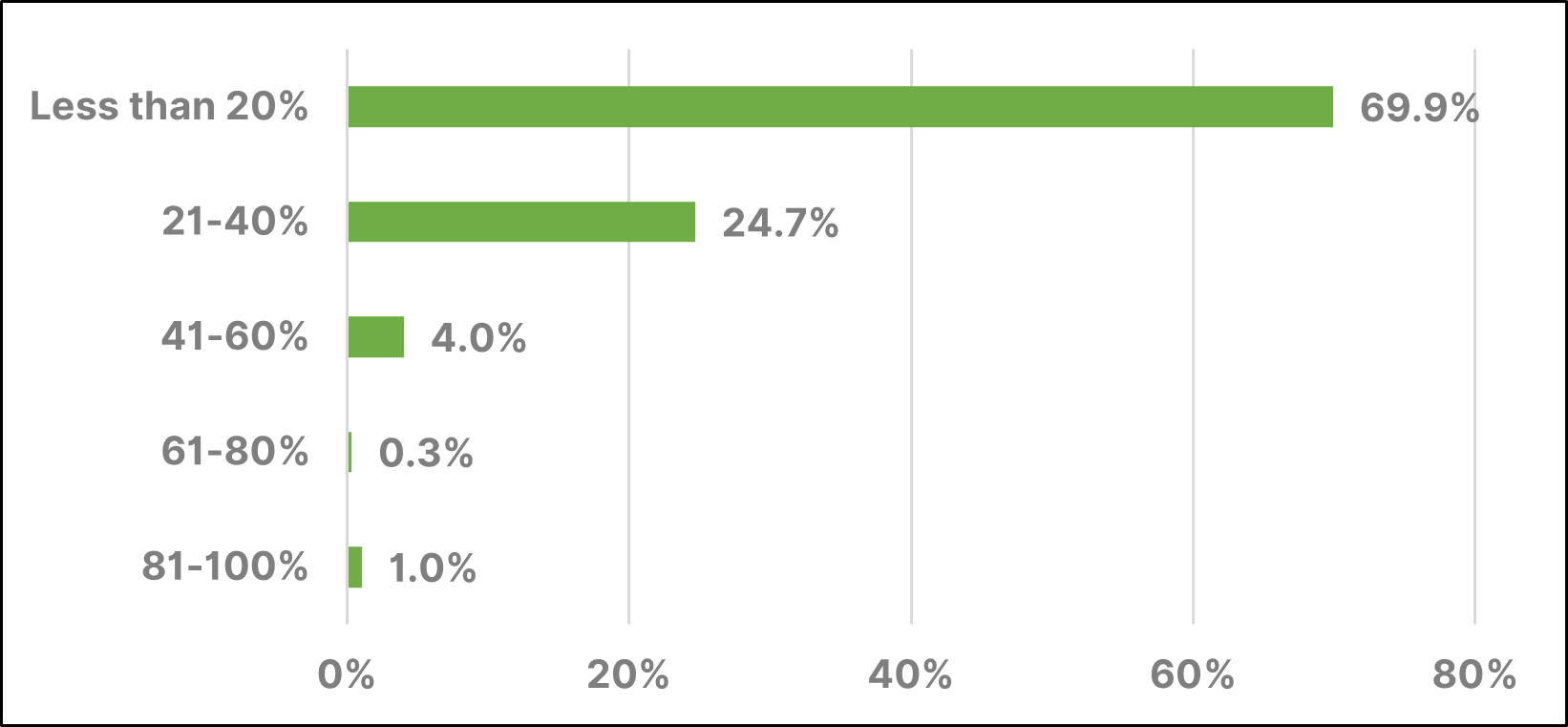
CLASP’s survey revealed that residents are generally more likely to store their non-functioning appliances in their households rather than to dispose or recycle properly, with 84% of respondents in Rwanda and 95% in Kenya reporting a lack of awareness on any designated e-waste disposal options in their communities. However, some consumers could better cite the dangers of improper e-waste disposal, indicating the benefits of awareness raising. Lilian Muthoni of the Usweni region in Kitui county in Kenya noted, “Kuna vitu hufai kuweka kwa nyumba, kama battery italipuka.” (There are things you should not store in your house, something like a battery can explode.)
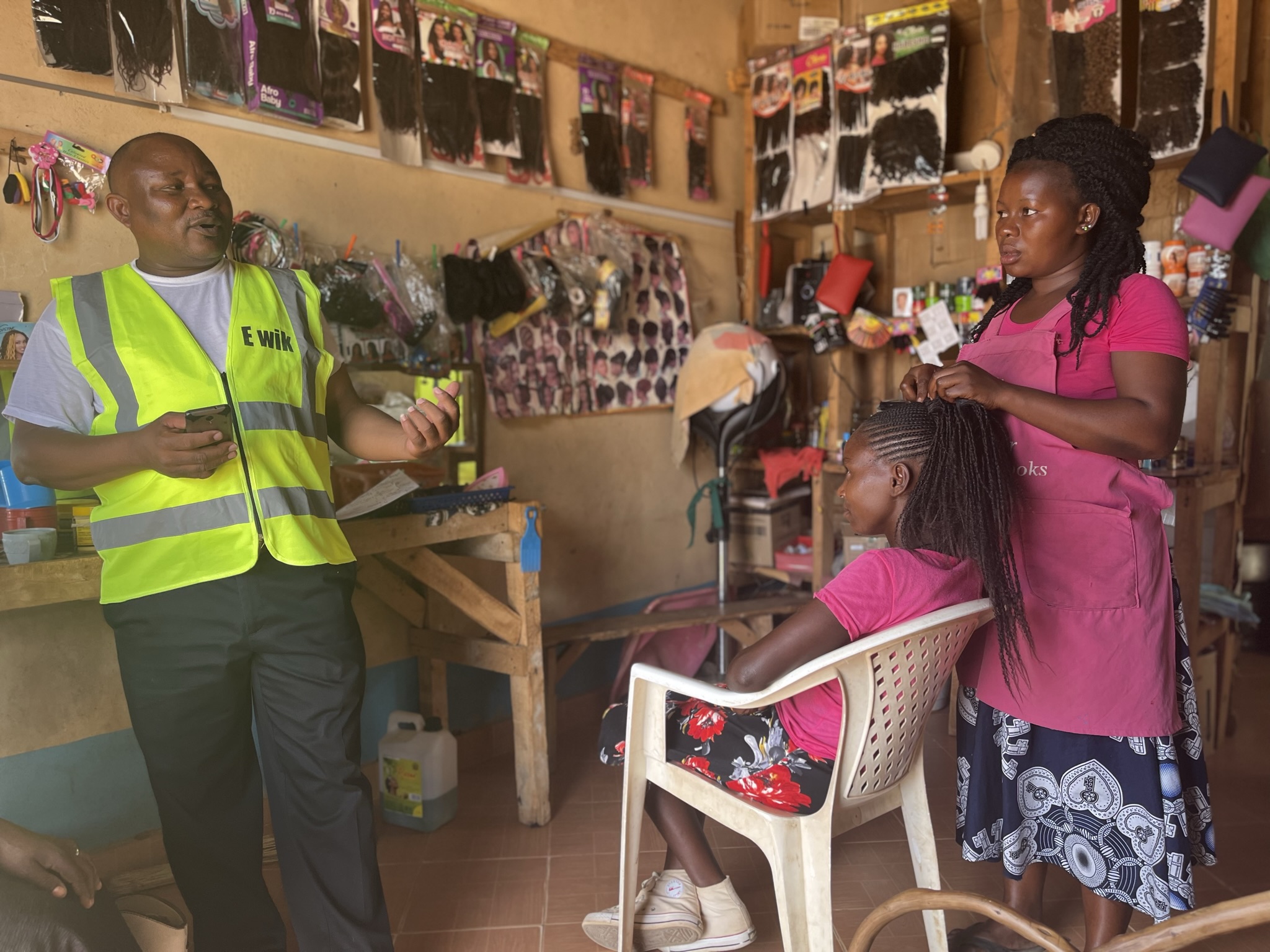
A strong majority of the survey respondents that are using unsustainable practices expressed a willingness to switch to more sustainable behavior. In summary, awareness of environmental impact of poor e-waste disposal, financial incentives, and ease of disposal are the key factors that would promote more sustainable household behavior.
From Policy to Practice: Implementing E-Waste Regulations
Kenya has adopted several regulations that govern the quality and energy efficiency of appliances such as TVs, refrigerators, and off-grid solar (OGS) products. The Energy and Petroleum Regulatory Authority (EPRA) in 2013 initiated a mandatory standards and labelling (S&L) scheme covering lighting products, refrigerators, air-conditioners and motors, and the IEC quality standards for solar products. Similarly, the Rwanda Standards Bureau (RSB) has developed and published several standards for various electrical and electronic products, as well as a dedicated standard on e-waste management. These standards prescribe handling, collection, transportation, and storage of various categories of e-waste. Both countries are party to several regional and multilateral environmental agreements, including the Basel and Bamako Conventions.
Unfortunately, there is currently no information available quantifying the effectiveness of these schemes in keeping low quality appliances off the market. This gap in information may be due to the lack of clear practical guidance on how roles and responsibilities are distributed throughout the e-waste management ecosystem.3 This was evident in the feedback among surveyed e-waste stakeholders, where many had no awareness of the regulations that impacted them; those that did could not describe their effects.
Governments in sub-Saharan African countries are working to develop policies to mitigate further environmental harm, but often lack funding, expertise, and personnel to implement regulations. To achieve a green economy, both Kenya and Rwanda will need to bring together diverse stakeholders, allocate sufficient resources, and invest in awareness raising on proper e-waste management practices and infrastructure.
Keeping Stakeholders in Sync
The e-waste landscape in both Rwanda and Kenya reveals a complex ecosystem with an array of stakeholders, each with varying levels of influence and interests. Collaborative efforts are therefore pivotal in harnessing the potential of these stakeholders to drive sustainable e-waste management and foster a circular economy.
A significant proportion of these stakeholders operate within the informal sector, highlighting the importance of their involvement in decision-making processes and the development of initiatives. For instance, households commonly opt to take their malfunctioning appliances to informal repair shops. However, most times, these repair shops often face challenges related to limited technical expertise for advanced fault resolution and unavailability of spare parts, as Claude, an appliance repairer in Muhanga District in Rwanda said. Claude points out, “Sometimes, when a customer brings a phone, radio, or television to be repaired, we cannot help them because the spare parts are not available here. It would be better if spare parts could be made available in Muhanga or even Kigali.” This sentiment is not unique to Claude.
To support the e-waste landscape, for both formal and informal players, it will be useful to incorporate their perspectives in decision-making around key initiatives designed to develop the market (e.g., capacity-building programs, establishing accessible spare part markets etc.). Moreover, the research findings underline the potential for mutually beneficial relationships to flourish, particularly between formal and informal actors. There is great opportunity for governments to play a vital role in facilitating this collaborative relationship, such as exploring innovative measures and instruments to make the formal sector more accessible to informal stakeholders.
Grounding in Numbers: The Urgent Need for Data
The need for effective e-waste management policies and regulations is apparent, yet it hinges on a fundamental understanding of materials entering and leaving the ecosystem; this is grounded in data. Unfortunately, there is a lack of data on material flows in both Kenya and Rwanda, and the relatively small stakeholder sample used in the study did not offer precise estimates of quantities handled.
Furthermore, the majority of stakeholders, especially those in the informal sector, do not keep track of the amount of materials they handle. A notable example comes from Maina Gitau, a small-scale refurbisher in Nairobi, who found it difficult to pinpoint the number of appliances and materials he sells due to the constant turnover of his inventory. While he likely keeps records of revenue, tracking the precise quantity of materials passing through his shop daily remains a challenge.
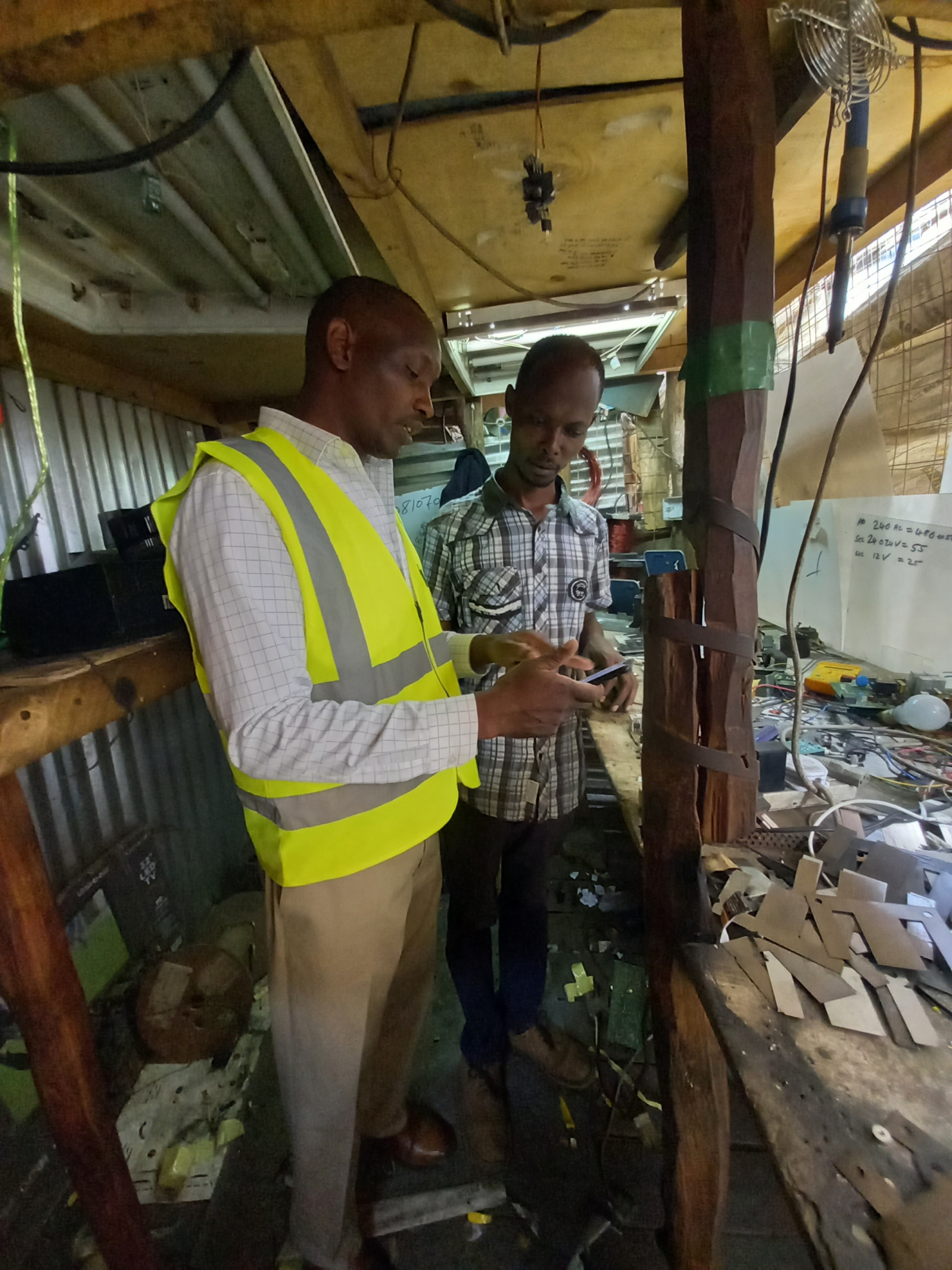
To address these data gaps and ensure an accurate assessment of e-waste flows, both countries must establish systemic data collection frameworks. These frameworks should involve relevant government agencies, including those responsible for trade and industry, to track not only material flows, but also all stakeholders within the appliance value chains.
Crucially, such data collection initiatives will help monitor the impacts of transitioning to a circular economy, which, according to the International Labor Organization, could generate over six million jobs. Furthermore, these frameworks will simplify access to information on e-waste collection and processing facilities for the public, enabling a more informed and responsible action for proper e-waste management. Lastly, government agencies can leverage this data to support collaborations, funding efforts, and infrastructure development aimed at sustainable e-waste management.
Summing it Up
Understanding end-of-life practices for appliances is pivotal in establishing sustainable frameworks for responsible disposal and for promoting the broader mission of circularity. The recommendations derived from our studies in Rwanda and Kenya hold promise far beyond these borders. By implementing robust awareness campaigns, enforcing e-waste regulations, and establishing systemic data collection systems, countries in sub-Saharan Africa can take substantial steps toward responsible e-waste management. May this study serve as a catalyst for others to continue conducting research on e-waste landscapes across sub-Saharan Africa and beyond.
The full publications for this study on Rwanda and Kenya can be accessed on the MECS website.
Explore related work and initiatives in circular economy and clean cooking that CLASP has completed, such as the Bending Toward Circular report and Use and Impacts of Electric Pressure Cookers report. Additionally, be on the lookout for our forthcoming projects, including a reparability index study for solar appliances, which will provide valuable insights into the evolving landscape of sustainable practices and offer opportunities for collaboration in our shared mission towards a more sustainable future.
CLASP Embraces China’s Newest Push Toward Circular Economy
Following China’s policy efforts to increase circular economy (CE) principles domestically, CLASP’s China program will integrate CE into project plans for 2023-2024. Initially, CLASP may support the phase out mercury-containing fluorescent lamps and promote environmentally-friendly refrigerants. This move will strengthen CE policy both in the country and surrounding region, as China is a key manufacturer and exporter for a plethora of appliances.
“This is a practical guidance for all industry stakeholders. It helps manufacturers to enhance manufacturing capacity for energy-efficient products and collaborate with waste management facilities to grow demand in the waste appliance recycling market. Consumers will also be supported to exchange their appliances for more efficient models.”
– Mr. Pengcheng Li, CNIS Chief Analyst
Chinese policymaker interest in circular economy has grown steadily since the 2009 passage of the Circular Economy Promotion Law of People’s Republic of China. This new policy, titled Guiding Opinions on Coordinating Energy Conservation, Acceleration and the Renovation and Upgrade of Products and Equipment in Key Areas, integrates CE strategies with existing work to promote energy-efficient appliances. The overarching goal is to further the market share of high-efficiency, energy-saving appliances and equipment.
To manage the influx of older and less-efficient models that will be swapped for more efficient alternatives, the Government is creating mandated recycling streams and requiring safe and environmentally sound disposal of associated HCFCs and HFCs (ozone-depleting refrigerants used in many appliances). Researchers and industries see this policy as a stimulus for an improved economic system of recycling, resource utilization, clean and low carbon production to help establish circular economy in the appliance sector by 2025.
“We are confident that this policy will help China to cut energy consumption intensity by 13.5% per GDP and to honor international agreement such as Kigali Amendment and the Minamata Convention on Mercury”.
– Steven Zeng, CLASP China Program Lead
CLASP is eager to be involved in this complementary role to energy efficiency policy and expanding our role in shaping circular economy progress. Learn more about our circular economy work and efficiency work in China.
Africa Region Galvanizes Efforts to End Mercury Lighting
Download the press release here.
WASHINGTON/BRUSSELS (3 May 2023) – The Zero Mercury Working Group and the Clean Lighting Coalition commend the Africa Region for proposing an amendment to phase out all the remaining fluorescent lamps at the Fifth meeting of the Conference of the Parties (COP 5) of the Minamata Convention on Mercury in Geneva.
This amendment complements the unanimous decision at Minamata COP4 to phase out compact fluorescent lamps (CLFs) by 2025. If adopted in November, the COP5 Amendment will effectively end the manufacture and trade of all fluorescent bulbs globally by 2026.
Phasing out the proposed categories of fluorescent lamps in the timeline proposed in the amendment will cumulatively:
- avoid 3.00 gigatonnes of carbon dioxide;
- save US $1.26 trillion in electricity costs, and;
- prevent 176 metric tonnes of mercury pollution – including both mercury used in lamps, and the mercury emissions from coal-fired power plants that would be avoided through lower electricity use for lighting.
“The COP5 African Lighting Amendment is the most effective strategy we have to limiting the dangerous health and environmental impacts of mercury-containing fluorescent lighting,” said Elena Lymberidi-Settimo, International Co-coordinator of the Zero Mercury Working Group. “The Africa region, and most regions around the world, do not have the recycling capacity and resources to properly manage the mercury contents of end-of-life fluorescent bulbs. Widely available LED alternatives mean these exemptions are no longer necessary – there is no justifiable reason to continue manufacturing, importing or exporting harmful fluorescent technologies.”
All fluorescent lamps contain mercury, a neurotoxin that can cause harmful and long-term health effects. Mercury is on the World Health Organization’s list of the 10 chemicals or groups of chemicals of major public health concern, as it affects the nervous, digestive and immune system. Pregnant people and children are at heightened risk for these health impacts.
When a fluorescent lamp is broken or improperly disposed of, the mercury from the lamp contaminates the atmosphere, land and water – posing a risk to workers and the local environment.
“We applaud the Africa Region for their continued leadership in the transition to more efficient mercury-free lighting,” said Rachel Kamande, Campaign Lead of the Clean Lighting Coalition. “The economic case to phase-out fluorescent lamps is even stronger today because the mercury-free LEDs have become less expensive and energy prices have increased leading to even shorter payback periods.”
LEDs are the most efficient lighting option on today’s market, consuming only half as much energy as fluorescent bulbs and have a lifespan up to three times longer. Due to the reduced energy demand, LEDs bulbs ease strain on the electric grid and have a rapid payback period for consumers. LED retrofits for fluorescents are widely available around the globe, with lamps to fit nearly every need and ballast.
Although some of the world’s largest lighting manufacturers already have plans to fully transition to LEDs in the next decade, many continue to export fluorescents – often to less regulated markets. The Africa region’s Amendment will prime the global LED market for an equitable and economically beneficial transition away from toxic lighting.
###
About the Clean Lighting Coalition: The Clean Lighting Coalition is a global partnership to capture the health and environmental benefits of eliminating mercury-based lighting. www.cleanlightingcoalition.org
About The Zero Mercury Working Group: The Zero Mercury Working Group is a coalition of more than 110 environmental and health non-governmental organizations from over 55 countries, which strives for zero supply, demand, and emissions of mercury from anthropogenic sources. www.zeromercury.org
PRESS CONTACTS
Washington, DC: Ana Maria Carreño, Director, Clean Lighting Coalition
acarreno@clasp.ngo | Phone/WhatsApp: +1 202 999 2886
Washington, DC: Alexia Ross, Strategic Communications Associate, Clean Lighting Coalition
aross@clasp.ngo | Phone/WhatsApp: +1 339 222 4311
Brussels: Elena Lymberidi-Settimo
International Co-coordinator Zero Mercury Working Group & Policy Manager, European Environmental Bureau
elena.lymberidi@eeb.org | Phone/WhatsApp: +32 496 532818
Communicating Circular Economy Through Labeling
The concept of circular economy (CE) and its inclusion on appliance energy efficiency labeling is still relatively new but is needed to increase awareness of CE principles across in all stakeholders. Because of its recency, there are few examples of existing schemes, making it difficult for countries to establish new programs. CLASP, in working with the Electricity Generating Authority of Thailand (EGAT), analyzed five existing schemes and provided recommendations to EGAT based on those cases.
Though the research was done to support EGAT, the analysis and recommendations could be useful for organizations in any country for starting or integrating a circular economy labeling scheme. Some of the key recommendations were:
- Build a strong national circular economy framework exists so expectations, definitions, and compliance are easy to understand.
- Ensure all stakeholders (e.g., manufacturers, retailers, consumers, disposal and recycling centers, civil society, government representatives) are informed and consulted.
- Evaluate the specific needs and most relevant products to the region.
- Join with other relevant stakeholders, local and global, to build capacity and increasing knowledge sharing.
Bending Toward Circular: Using Extended Producer Responsibility Schemes to Transition to Appliance Circular Economy
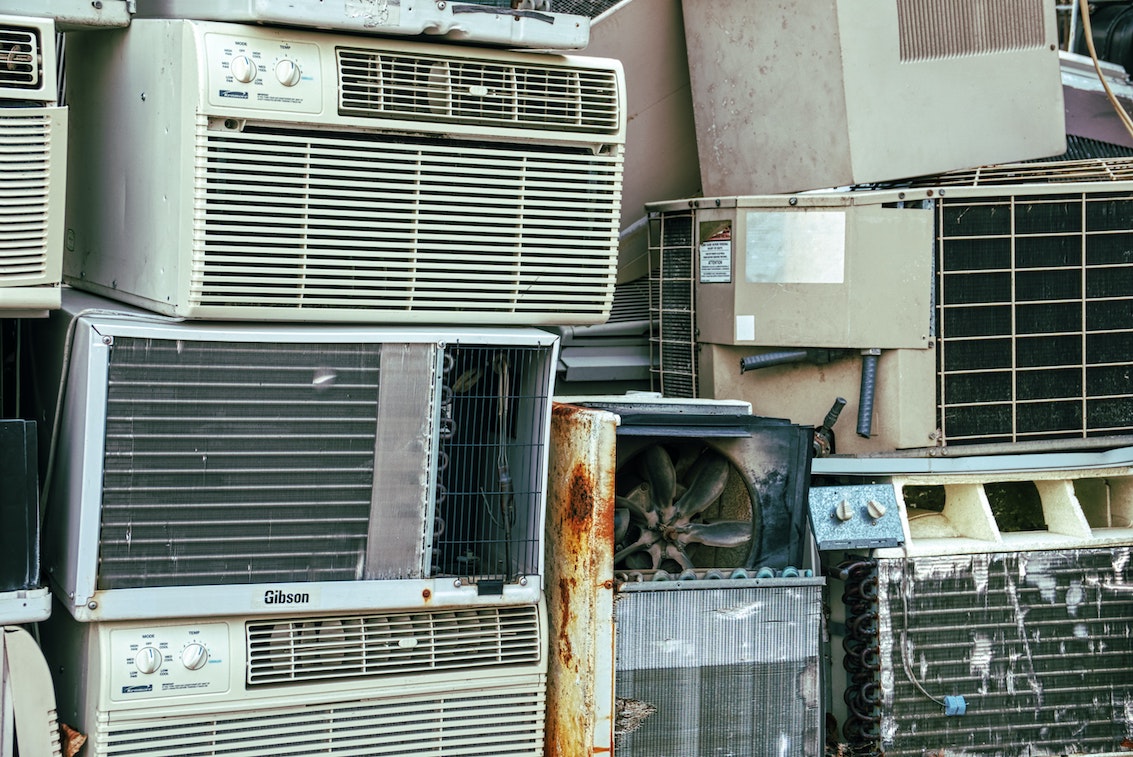
Every year, an estimated 100 billion tonnes of materials enter the global economy, but only 8.6% is recycled and used again.
EPR schemes, in which the producer’s responsibility for reducing environmental impact is extended across the whole life cycle of the product, can introduce opportunities for circularity within linear economic models.
At the end of its usable lifetime, electronic equipment (which covers a wide range of products that can include washing machines and personal computers) poses an environmental and financial opportunity, if disposed of correctly. As e-waste, these discarded appliances can be managed so as to reduce the resource impact they have through supervised recycling, repair, refurbishment, and remanufacturing, but only if these processes are carefully designed and implemented.
This report analyzes extended producer responsibility (EPR) schemes, which assigns the producer/manufacturer responsibility for end-of-life management. Because they will ultimately pay for its disposal, EPR schemes aim to incentivize thoughtful design that makes the products less resource-intensive, longer lasting, and easier to repair, repurpose, and eventually recycle. EPR schemes are an effective introductory tool for transitioning a traditional linear economy to a circular one which minimizes waste and negative environmental impacts.
CLASP looked at ten case studies of EPR schemes from around the world and outlined the different options available for an EPR program, some of which cover:
- Capacity building and needs assessment specific to the locality
- Managing body (government or private sector)
- Scope of products covered
- Prioritization based on the environmental and health impact of an appliance’s components
- Financial infrastructure
- Legal framework for ensuring compliance
It is important to note that CLASP does not present an ideal EPR framework in this report, as each program will vary based on the individual needs of the areas the programs serve. Some basic principles, like conducting an end-of-life management needs assessment with stakeholder consultations, is recommended in every situation for success.
Supporting Circular Economy for Renewable Energy Projects
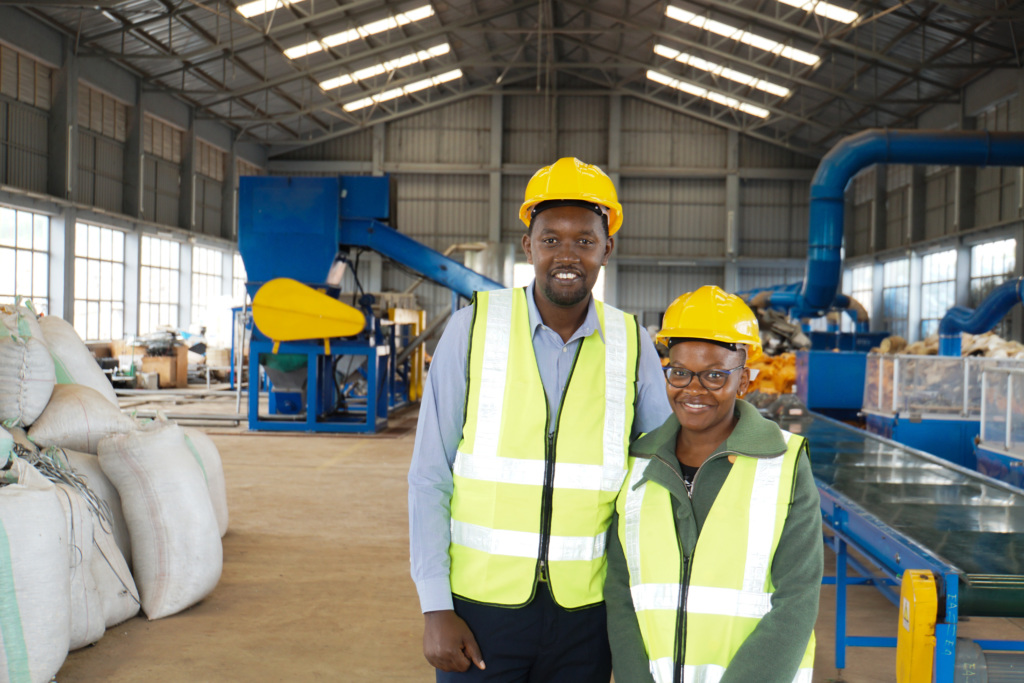
The demand for more renewable energy technologies such as solar panels and wind turbines is creating pressure on the environment due to mining of critical metals and production of more e-waste as these technologies reach their end-of-life cycle, creating an opportunity for a circular economy. In a circular economy, materials have multiple life cycles and re-entry points into the market as they are systematically recovered, repaired and remade.
CLASP is part of a team that supports the U.S. Agency for International Development’s (USAID) Scaling Up Renewable Energy (SURE) program. CLASP was recently awarded a subcontract under the SURE program, led by Tetra Tech, alongside dss+ to engage strategically with governments, the private sector, civil society, and communities to support transformational policies and initiatives and to build human capital and institutional capacity to address waste challenges associated with renewable energy investments while creating economic value and jobs. Tetra Tech, CLASP, and dss+ technical experts work with partners to develop innovative tools, sustainable practices, policies, business models, and secondary markets for renewable energy parts and materials, cultivating a circular economy that is gender-inclusive, reduces waste, makes the supply chain more resilient, and extends the life of parts. CLASP supports USAID in the development of country-specific circular economy plans to ensure the demand for renewable energy sources does not negatively impact the environment.
Renewable Energy: Sustainable Solution or Environmental Risk?
Obsolete renewable energy equipment is expected to grow exponentially over the next 30 years. Instead of damaged and decommissioned equipment piling up as waste, the life of these materials must be extended beyond their original use. In 2019, an estimated 18,000 tons of solar photovoltaic (PV) panel waste was generated. By 2050, PV panel waste could increase to 10 million tons annually (BNEF 2020). There will be up to 52,000 tons per year of decommissioned wind blades by 2030 (WindEurope 2020).
Amplifying Circular Economy in Our Appliance Work
What is the Environmental Footprint of an Appliance?
Understanding circularity and circular economy (CE) principles is vital to grasp the total environmental impact of the appliances we use every day. As stewards of appliance energy efficiency, CLASP’s mission to ensure appliances are veritably beneficial to people and the planet includes all stages of the appliance lifecycle.
CE principles have the potential to substantially reduce emissions associated with the production and end-of-life, as well as when appliances are in-use. The international CE movement is still relatively new – one-third of the Nationally Determined Contributions submitted in 2021 included mentions of “circular economy” – CLASP is working to influence budding CE programs and nudge other governments in a similar direction.
Strengthening Appliance Circularity in the EU
In 2016, CLASP published a study on the GHG savings potential from applying circular economy principles to a range of products and appliances covered by the EU Ecodesign directive.
“Our research showed that by simply extending the service life of several categories of appliances, the planet would experience significant CO₂ reductions,” said lead author Marie Baton of CLASP Europe.
Applying circular economy principles to product regulation can extend and expand our CO₂ mitigation efforts, covering the whole product’s lifetime, from raw material extraction and production through to transport, use and end-of-life.
Prolonging the service life of widely owned and highly used consumer electronics (e.g., laptops, smartphones, televisions, etc.) could potentially prevent 57,991 kg of CO₂. While the EU recently implemented a ‘Right to Repair’ plan for smartphones, more progress is needed to cover a wider range of household appliances to reach ambitious climate targets. The researchers recommended further investigation on the economic consequences and opportunities to strengthen legislative infrastructure that would incentivize CE transition programs.
Earlier this year, the EU updated their Ecodesign framework to include more product categories and increase efficiency requirements for currently regulated energy-related products. CLASP participated in the consultations for these revisions, which go beyond energy efficiency and may cover product durability, reusability, upgradability and reparability; presence of substances that inhibit circularity; energy and resource efficiency; recycled content; carbon and environmental footprint.
Building Capacity for E-Waste Management in Africa
Off-grid solar technologies provide life-changing access to modern energy services. Yet, unmitigated e-waste generation and insufficient treatment capacity threatens to reverse gains made within the sector. In 2019, CLASP through the Efficiency for Access Coalition, launched the Global LEAP Awards Solar E-Waste Challenge to address e-waste logistical and infrastructure challenges in sub-Saharan Africa.
“The first round of the Challenge supported eight companies – three recyclers and five solar companies – implement projects in take-back and collection, recycling, repairability and consumer awareness raising,” explained Monica Wambui who managed the project. “The second round is currently supporting four solar companies to design products and batteries that can be easily recycled and repaired.”
Some highlights from the Challenges include designing more easily replaceable batteries for solar home systems (Aceleron Energy); establishing a network of e-waste collection points across Rwanda, including rural areas and border points (Enviroserve Rwanda); and several take-back/buy-back programs to encourage circular reintegration (WeTu, SunnyMoney, d.light, and ENGIE Energy Access).
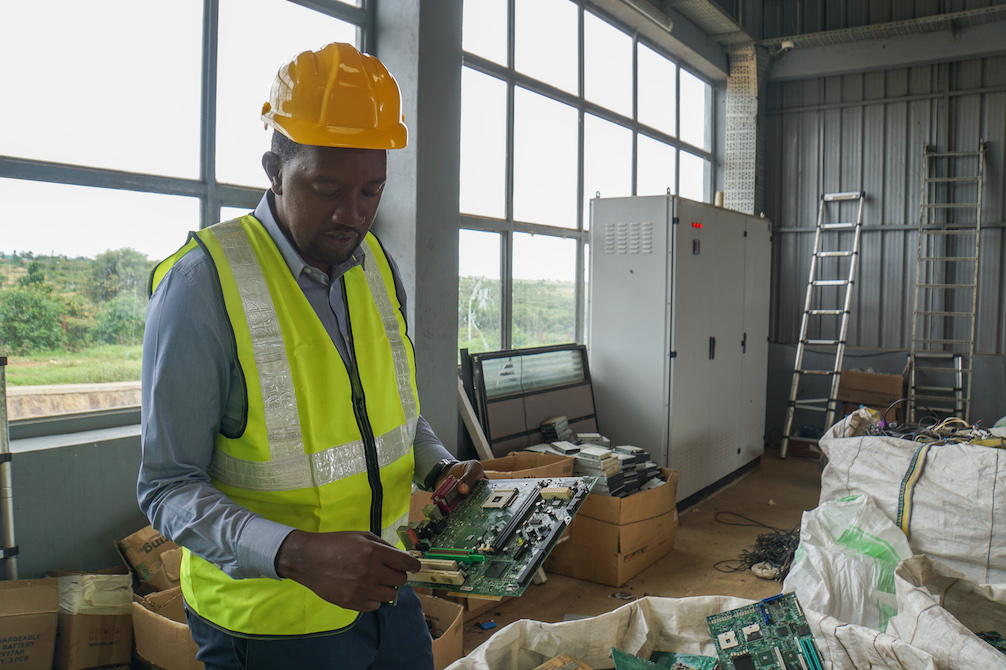
Hinckley Recycling, winner of the first round of the Challenge, recently partnered with CLASP through the Clean Lighting Coalition to procure the first mercury bulb crusher in Africa. The Nigerian facility is now able to safely dispose of fluorescents, preventing environmental contamination and negative health impacts from mercury exposure.
Charting a Course to Circularity in Thailand
“In Thailand, we cited global best practices in international CE labelling programs, like the German Blue Angel in Germany, and the Repairability Score in France, to provide a foundation for their own program,” explains CLASP’s Sara Demartini. CLASP organized an international CE labeling knowledge exchange in June with representatives from the Thai government as well as international stakeholders and the Thai industry.
“Our research coupled with the knowledge exchange led to recommendations for the Electricity Generating Authority of Thailand to be considered as they integrate CE into their program.” Though the recommendations were aimed at the Thai government, the conclusions remain relevant for any circular economy labeling scheme.
CLASP is also scoping opportunities to support Thailand introduce an end-of-life action plan for air conditioners by conducting international research and working with partners on the ground to understand current situation and challenges. The final output will be an end-of-life action plan for ACs, expected to be finalized in October.
Scaling Circularity for Renewable Energy
CLASP is also working as a subcontractor with Tetra Tech on USAID’s Scaling Up Renewable Energy (SURE) program to develop, promote and pilot CE initiatives around the world, focused on recycling renewable energy mechanisms.
“We will support the plan, design and execution of activities that will help USAID and its partner countries to better understand, implement, and promote a circular economy for renewable energy,” explains Monica Wambui who is overseeing CLASP’s contributions to the project.
CLASP looks forward to broadening the knowledge base for practical application of CE principles and will continue to advocate for appliances that will deliver the greatest benefits for people & planet.
Find CLASP at the International Conference on Energy Efficiency in Domestic Appliances and Lighting (EEDAL)
After more than two years, we are excited to attend in-person conferences to share insights into our global appliance energy efficiency work. From 1-3 June, team members from our Washington D.C., Nairobi, Europe and New Delhi offices will present at the International Conference on Energy Efficiency in Domestic Appliances and Lighting (EEDAL) in Toulouse, France.
Their presentations will cover the impact of television and lighting efficiency policy in India; Mepsy, a new tool to model energy and carbon reduction policies; product registration systems to support compliance of energy efficiency policies; opportunities for solar e-waste management in Sub-Saharan Africa; digital marketing campaigns for national energy labels; online energy label regulation in our changing digital markets, and more.
Find out more about their sessions below and reach out if you or one of your colleagues will be attending.
Wednesday June 1st, 2022
14:00 – 15:40
Session 1.a Policy 1
Evaluation of Television Efficiency Policy and Market Transformation in India
Kishore Kumar, CLASP India
Introducing Mepsy: The Appliance & Equipment Climate Impact Calculator
Angellah Wekongo, CLASP Kenya
Thursday June 2nd, 2022
10:45-12:25
Session 4.a Policy 4
Evaluation of Lighting Efficiency Policy and Market Transformation in India
Kishore Kumar, CLASP India
14:00-15:40
Session 5.a Policy 5
Role of Product Registration Systems in Supporting Compliance of Energy Efficiency Policies
Neha Dhingra, CLASP India
14:00-15:40
Session 5.b Appliances
Innovations for Sustainable Off-grid E-Waste Management Across Africa
Monica Wambui and Hannah Blair, CLASP Kenya
Friday June 3rd, 2022
8:30-10:10
Session 7.a Behaviour
Can digital advertising raise consumer awareness of energy efficient domestic appliances? A case study of the #KenyaEnergyLabel campaign
Hannah Blair and Angellah Wekongo, CLASP Kenya
10:45-12:25
Session 8.a Policy 6
Online Energy Labeling Regulation and Compliance in the Growing Online Market
Katriana Dubytz and Lina Kelpsaite, CLASP United States with Marie Baton (CLASP Consultant, Europe)
Abstracts
Evaluation of Television Efficiency Policy and Market Transformation in India
Kishore Kumar, CLASP India
Televisions play an essential role in the lives of millions of Indians as a source of information, entertainment and education. The television market in India has doubled over the last decade as the appliance has become commonplace across households, businesses and institutions, driven in part by increasing disposable income. The penetration of television ownership among households in the country is close to 66%, with sales of about 8.5 million units in Fiscal Year 2019-20.
Anticipating the rising sales of televisions and associated electricity demand, in 2009 India adopted an energy efficiency policy for televisions. The policy covers four technologies: cathode ray tube (CRT); liquid crystal display (LCD) with cold cathode fluorescent lamp (CCFL) backlit; LCD with light-emitting diode backlit (LCD-LED); and plasma. Since its adoption the television efficiency policy has been revised 3 times, raising minimum energy performance standards by 45% from initial levels and transforming the television market toward more efficient LED technologies. As of last year, India’s television efficiency policy had saved 20 Terawatt-hours of electricity and reduced carbon emissions by a cumulative 16.7 million tons.
This paper analyses market growth, technology evolution and market transformation resulting from the television energy efficiency policy, assesses potential policy revisions, and calculates potential efficiency gains through 2030.
Introducing Mepsy: The Appliance & Equipment Climate Impact Calculator
Angellah Wekongo, CLASP Kenya
Mepsy is CLASP’s free digital tool to model the impacts of energy and carbon reduction policies. Setting policies and achieving their benefits requires accurate, actionable data. Mepsy’s dynamic, user-friendly interface guides researchers and policymakers in identifying efficiency policy opportunities and analyzing their energy and carbon impacts. Pre-loaded with data from 162 countries, it supports analysis and prioritization for the most energy-intensive appliances and equipment— space heaters, air conditioners, refrigerators, fans, electric motors, televisions, and lighting—with more technologies being planned to be included in the tool. Efficiency standards often called MEPS (minimum energy performance standards) are a key building block in most national plans but the analytical tools used to support policy design have long been too difficult or expensive to use and customize. CLASP developed Mepsy to address these issues and make rigorous efficiency policy analysis accessible to the widest possible audience.
Mepsy accumulates appliances sales over lifetime to determine the number of appliances in use in a country, then incorporates the energy performance of locally-representative products, typical usage patterns, the climate-intensity of the national grid, and other variables to analyze the energy consumption, carbon dioxide emissions, and consumer energy costs associated with given policy scenarios.
Evaluation of Lighting Efficiency Policy and Market Transformation in India
Kishore Kumar, CLASP India
Electric lights are used by millions across India. The lighting market has increased exponentially over the years due to rapid population growth, more dwelling units, concept of smart lighting, and electrification at remote places. In Fiscal Year 2018-19, India manufactured about 1.4 billion lamps and tube-lights. The lighting segment consumes approximately 18% of total electricity use in the residential sector, resulting in 40 million tons of greenhouse gases (GHG) emissions.
Energy efficient lighting is one of the most cost-effective measures to address the impacts of growing electricity demand from the sector. Recognizing this, India adopted an energy efficiency policy for Tubular Fluorescent Lamps (TFL) in 2006. A decade later, an efficiency policy for LED bulbs was also announced to cover another new category of lamps as LEDs gaining a mainstream lighting market across industrial, commercial and residential installations. Since its adoption, 1.2 billion TFLs and 0.8 billion LED lamps have been star-labeled, thereby developing the market towards more energy-efficient lighting. India has experienced one of the most remarkable successes in market transformation for lighting as a result of efficiency policies and mass procurement exercises such as the UJALA scheme. Over the last 15 years, lighting efficiency policies have resulted in cumulative electricity savings of 18 Terawatt-hours and reduced GHG emissions by 15 million tons.
This paper analyses and discusses the trends in market growth, technology evolution, and market development as a result of lighting efficiency policies and further assess the potential for future policy revisions.
Role of Product Registration Systems in supporting compliance of energy efficiency policies
Neha Dhingra, CLASP India
Robust policy compliance and enforcement are key to realizing and safeguarding the benefits and the impact of appliance energy efficiency policies and market transformation initiatives. A product registration system is an integral tool to support policy compliance both at the national and regional level. It serves as an initial compliance gateway where manufacturers and suppliers register eligible products market entry, thereby accelerating implementation of the national and regional product efficiency policies. The product registration system also enables compliance authorities to share market intelligence on non-compliant and suspicious products, so they can strategically target their market surveillance activities and allocate resources for more effective compliance initiatives. The data captured within the tool can also be used to guide consumer and procurement purchasing decisions, and to track product trends and efficiency levels, which can inform new and future policy revisions.
A well-maintained and resourced tool can help transform the market towards more efficient appliances, build credibility of the energy efficiency program amongst consumers and provide a level playing field to the industry. The paper will cover qualitative analysis of regional product registration systems across the world with a specific focus on Economic Community of West African States (ECOWAS) regional product registration system. The paper will share key lessons and considerations for policymakers to develop a regional system ranging from political buy in, early agreements, consultative process amongst others. This paper will shed light on what goes into the development and operation of these tools; potential barriers and provide recommendations to develop and run a robust system. The comparative analysis of different systems will benefit countries developing a new product registration system or upgrading an existing one.
Innovations for Sustainable Off-grid E-Waste Management in Sub-Saharan Africa
Monica Wambui and Hannah Blair, CLASP Kenya with Rebecca Rhodes, GOGLA
Over the past decade, hundreds of millions of people in off- and weak grid environments have gained access to energy services thanks to the rapid expansion of off-grid solar products and services. Yet, the proliferation of solar e-waste poses a threat to the health and environment of the very people benefiting from off-grid energy services. Across sub-Saharan Africa, infrastructure for e-waste management is either nascent or undeveloped, leaving end-users with limited to no options. Most consumers deal with their end-of-life solar products by storing, dumping, burning or disposing of them in water bodies or latrines. As solar sales grow, a sustainable solution for e-waste management must be developed.
To stimulate innovations and collaboration for off-grid solar e-waste management, the Efficiency for Access Coalition launched the Global LEAP Awards Solar E-Waste Challenge in 2019. The Challenge selected eight companies – off-grid solar, recyclers and waste management companies from five sub-Saharan African countries- to test different aspects of e-waste collection and disposal, including recycling, repair and refurbishment, take-back and collection, awareness raising and incentives. This paper aims to share the good practice that emerged from these projects, with the spotlight on Kenya, as the largest off-grid solar market on the continent and the implementing country for half of the projects. The paper explores key interventions so that other companies can replicate the successes and avoid some of the pitfalls.
Can digital advertising raise consumer awareness of energy efficient domestic appliances? A case study of the #KenyaEnergyLabel campaign
Hannah Blair and Angellah Wekongo, CLASP Kenya
In an effort to promote high-quality, efficient domestic appliances to reduce consumers’ electricity costs, the Kenyan government developed and implemented a Kenya-specific energy label. Labeling is a critical component of effective appliance energy policy, encouraging consumers to make informed purchase choices and protecting them from poor quality, inefficient products. However, consumer awareness, understanding, and trust in an energy label are central to its success. In 2019, the Energy and Petroleum Regulatory Authority (EPRA) requested support from CLASP to design and run an energy label consumer awareness campaign.
CLASP designed and implemented the #KenyaEnergyLabel campaign focused on the refrigerator, freezer, air conditioner, and motor labels across Facebook, Twitter, Instagram, and Google Ads for 4 months. The central campaign message, More Stars, More Savings, spoke to the five-star guide that demonstrates how much energy, and correlated energy expenditures, can be saved by purchasing appliances with higher star ratings. The campaign reached more than 2,500,000 Kenyans through 80 paid ads. This paper will share insights into the digital implementation of the campaign, evaluating consumer interactions with the advertisements and social media pages. The #KenyaEnergyLabel offers a case study for governments, regulatory entities, and other energy label stakeholders, outlining a low-cost, awareness raising intervention to target consumers and encourage the uptake of energy-efficient appliances.
Online Energy Labeling Regulation and Compliance in the Growing Online Market
Katriana Dubytz and Lina Kelpsaite, CLASP United States with Juraj Krivošík and Marie Baton
Energy labels engage retailers in promoting efficiency and influence consumers to choose more efficient products. To achieve this goal, they need to be visible where the purchase choices are made. With the steady growth of e-commerce, it is becoming increasingly important to require the display of energy labels for appliances sold online. In 2015-2020, e-commerce annual growth for major appliances was estimated at 17% globally, which increased to over 25% in 2020 due to the Covid-19 pandemic. Appliance e-commerce growth is expected to continue as consumers gain confidence in online purchasing and e-commerce capabilities. Regulating and enforcing online efficiency labeling regulations is necessary to secure market transformation, emissions reduction, and energy conservation targets.
Only the European Union (EU), United States, and South Africa have mandatory online labeling requirements, while the e-commerce growth has been recorded in markets in Asia Pacific, North America, the Middle East, and Africa. The EU has one of the world’s most comprehensive energy standards and labelling programs, and since 2015, has required the display of energy labels for online appliance sales. This paper discusses the status of online regulations and enforcement mechanisms globally, including unique challenges such as regulating online retail platforms for third-party sellers. It uses the EU case study, informed by the quantitative and qualitative evaluation of labeling compliance on 72 online retail websites for 5 products in six member states to provide insights and recommendations for policy makers and experts seeking to develop and increase compliance with online labeling regulations.
CLASP Collaborates with Hinckley to Mitigate Mercury Pollution from Fluorescents in Nigeria
Global Collaboration for Improved E-Waste Management
In sub-Saharan Africa, most e-waste is not disposed of properly. Collected and properly recycled e-waste (not just lighting products) was 4% in Southern Africa, 1.3% in Eastern Africa and close to 0% in other regions. Nigeria is among the top five e-waste generating African countries; in 2017, data shows that Nigerians generated about 300, 000 tonnes of electronic waste.
“We have been collaborating with CLASP to grow e-waste management capacity in Nigeria for more than three years,” explains Adrian Clews, Director at Hinckley Recycling in Lagos, Nigeria. “First as Winners of the Global LEAP Awards Solar E-Waste Challenge, CLASP helped us grow capacity to recycle off-grid solar products. Now, we are turning our attention to mercury in fluorescent lamps.”
All fluorescent light bulbs contain mercury, a neurotoxin classified by the World Health Organization (WHO) as one of the top ten chemicals of public health concern. Fluorescent bulbs release mercury whenever they are broken, which can occur in homes, schools, childcare settings, offices and apartment buildings, retail stores, factories, health care and other facilities.
Hinckley Installs Nigeria’s First Fluorescent Bulb Crusher
Fluorescents require specialized handling to dispose of the mercury contents properly. But the small size and weight of bulbs makes them easy for people to mistakenly dispose of in general waste, where they break easily. When broken, bulbs release mercury into the environment and put the health of workers and the public at risk.
“Fluorescents lamps are classified as hazardous e-waste. We have been collecting and storing them due to a lack of equipment to ensure proper and safe disposal. We currently have over 10 tonnes of fluorescents at our storage,” says Clews.
In 2019, over 850,000 Nigerians were at risk of mercury poisoning. To mitigate mercury exposure and promote proper handling and processing of fluorescents at end of life, CLASP is supporting Hinckley to install a fluorescent bulb crusher.
What is a Bulb Crusher?
A bulb crusher properly destroys fluorescent lamps by isolating dust and mercury vapour. The mercury released during this process is directly absorbed by the machine’s filter, actively neutralising the mercury and preventing it from being released into the atmosphere.
“We hope that Hinckley sets an example to e-waste recyclers across the continent to build capacity and recycle hazardous fluorescent bulbs,” says Nyamolo Abagi, Manager at CLASP. “Proper management of fluorescents has the potential to protect the environment and human health from mercury poisoning.”
Turn Out The Lights on Fluorescents
A new report released by the Clean Lighting Coalition highlights the environmental and health risks posed when fluorescent lamps break, especially to vulnerable populations. The report provides concrete steps government, industry, consumers, and others, like childcare providers, can take to accelerate the transition to LED lighting, which is mercury-free, more energy-efficient, more cost-effective, and widely available.
To mitigate the risks posed by mercury, the Coalition is calling on the Biden Administration to support the global phase-out of fluorescent lighting by 2025 at the upcoming meeting of the United Nation’s Minamata Convention on Mercury in March 2022. Furthermore, the Coalition notes that phasing out fluorescent lighting aligns with the Administration’s Executive Order on Tackling the Climate Crisis at Home and Abroad issued earlier this year.
“Fluorescent lamps have been tolerated for decades because they were considered the most energy-efficient option,” said Alicia Culver, Executive Director of the Responsible Purchasing Network and co-author of the report. “But this is no longer the case: LEDs are twice as energy efficient as fluorescent lamps, last 2-3 times longer, and they don’t contain mercury.”
The report details:
- Health risks to those exposed to mercury, especially populations that are more vulnerable, such as pregnant people and their unborn babies, infants and young children, communities of color, and those living in low-income neighborhoods
- Health risks to workers exposed to mercury when lamps break during the manufacturing, installation, recycling, and disposal of fluorescent lamps
- Environmental hazards posed by the release of mercury in fluorescent lighting
- Benefits of transitioning to LED lighting, now considered the most cost-effective and reliable lighting option in the U.S. marketplace
“We know that mercury exposure, especially in early life, can lead to irreversible deficits in verbal skills, reduced attention span and motor control, and lower IQ,” said Michael T. Bender, director of the Mercury Policy Project and one of the report authors. “However, these exposure risks are avoidable by replacing fluorescents with LEDs.”
The report recommends steps that government entities, businesses, and consumers can take to accelerate the transition to LEDs. For example, it recommends state and local governments:
- Adopt and enforce mercury reduction laws to phase out fluorescents. For example, Vermont law bans sales of mercury-containing lamps unless the manufacturer has demonstrated that no comparably performing alternative non-mercury energy-efficient lamp is available at a comparable cost.
- Update guidance, including on websites, to highlight the hazards of mercury in fluorescent lighting and the advantages of LEDs including reduced risk, better energy efficiency, longer product life, and significant cost savings.
- Adopt new lighting specifications that prohibit vendors from offering fluorescent lamps, fixtures and ballasts on their state supply contracts. Maryland and Minnesota are already using this approach to eliminate many fluorescent lighting products from their contracts.
- Develop contracts for environmentally preferable lighting equipment that offer a wide array of LED lighting products at discounted prices. New York State and the City of San Francisco have lighting contracts that feature LEDs.
The report also highlights guidelines from the US EPA regarding strict protocols that should be taken when cleaning up broken fluorescent lamps.
“There is no safe level of mercury exposure and following US EPA guidelines in cleaning up a broken lamp is not easy,” says Coalition Deputy Director and CLASP’s Senior Manager Ana Maria Carreño. “Most people, for example, either don’t know about or find it difficult to follow the proper procedures. Yet, with the tremendous advances in LED technology during the past decade, there’s no reason to continue using fluorescent lighting.”
Mercury is highly toxic to humans, which is why the World Health Organization lists it among the top 10 chemicals or groups of chemicals of major public health concern.
“The U.S. has been a global leader on many fronts,” said Michael Scholand of the Coalition and one of a worlds-leading experts on lighting policy and technology. “But when it comes to taking action on fluorescent lighting, the U.S. lags behind some African countries and the European Union, which have already taken steps to phase out mercury-based lighting.”
Mercury in Fluorescent Lighting: Unnecessary Health Risks and Actionable Solutions was published by the Clean Lighting Coalition in partnership with the Mercury Policy Project and the Responsible Purchasing Network. The report was co-published by CLASP, Vermont Public Interest Research Group, Healthy Babies Bright Futures, Eco-Healthy Child Care, the Children’s Environmental Health Network, Clean Water Action and Ecology Center.
The Coalition is encouraging consumers, businesses, and others to sign a pledge to support the global transition to clean and efficient lighting, and to end the manufacture, export and import of mercury-containing fluorescent lighting in the United States by 2025. To learn more, visit https://cleanlightingcoalition.org/advocates-pledge.
_____________
For more information about the transition away from mercury-based lighting, visit https://cleanlightingcoalition.org/benefits/
About the Clean Lighting Coalition
The Clean Lighting Coalition is a global partnership coordinated by CLASP to capture the health and environmental benefits of eliminating mercury-based lighting. To learn more, visit www.cleanlightingcoalition.org and follow the Coalition on Twitter, Facebook, and LinkedIn.
About the Mercury Policy Project
Founded in 1998, the Mercury Policy Project promotes policies to eliminate mercury use and reduce mercury exposure. To learn more, visit www.mercurypolicy.org
About the Responsible Purchasing Network
Responsible Purchasing Network is an international network of buyers dedicated to socially responsible and environmentally sustainable purchasing. To learn more, visit www.responsiblepurchasing.org
About Peter Maxson
Mr. Maxson is an environmental consultant who has long provided expert advice on mercury to multinational organizations, government agencies, nongovernmental organizations, and others.
